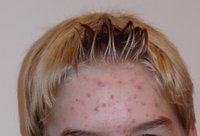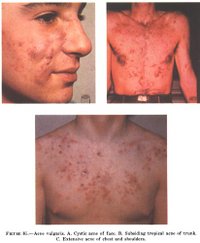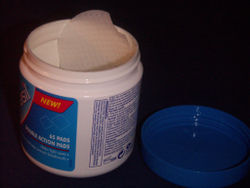At this year's annual meeting of the American Society for Dermatologic Surgery, which took place in Atlanta, Georgia on October 27-30, 2005, investigators provided new insights into the treatment of the common conditions of acne and photoaging. The imminent regulation of isotretinoin by the FDA under the new iPLEDGE program, which will be required as of March 1, 2006, has necessitated the search for alternative forms of acne treatment. Laser treatments of acne in the recent past have included the blue light (Clearlight, Lumenis) and the diode laser (Smoothbeam, Candela), both of which achieved FDA clearance but have yielded moderate results. Controversy exists over the efficacy of low fluence pulsed dye laser therapy for acne. At this meeting, the work of the author and others indicate that aminolevulinic acid combined with pulsed dye laser, blue light, or intense pulsed light may be a safe and highly effective treatment alternative for acne of all types and levels of severity. (1,3) In addition, difficult follicular occlusion diseases such as hidradenitis suppurativa were effectively treated with photodynamic therapy. (5) Further work using infrared lasers for acne demonstrated that the 1320-nm laser at longer pulse durations in the 100-200 ms range allowed for higher fluences and improved lesional clearance rates. (6) Thus, laser and light-based treatments and photodynamic therapy are emerging as important treatment options for acne.
New treatments for photoaging were presented at the meeting including a 1100-1800 nm infrared device for skin laxity and plasma skin resurfacing. Several investigators showed significant improvements in rhytides and laxity using the 1100-1800 nm infrared light (Titan, Cutera). In a site-matched control study comparing the infrared light to monopolar radiofrequency (Thermacool, Thermage), the infrared light demonstrated slightly more modest results as compared to radiofrequency, though with the advantage of far less discomfort. (5) A novel device which employs radiofrequency to pass nitrogen plasma through the epidermis results in controlled thermal ablation without collateral thermal damage. (7) The advantages of this ablative technology include more controlled depth and extent of ablation and, since the ablated epidermis is left in place, a rapid recovery time. In sum, the treatment of photoaging and skin laxity continue to progress at a rapid pace.
References
1. Alexiades-Armenakas MR. Safety and efficacy of pulsed dye laser-mediated photodynamic therapy with 5-aminolevulinic acid in patients with mild to severe cystic, inflammatory or comedonal acne. Amer Soc Derm Surg Abstracts, October 30, 2005, Atlanta, GA.
2. Alexiades-Armenakas MR. Long-pulsed dye laser-mediated photodynamic therapy with topical therapy for mild to severe comedonal, inflammatory, or cystic acne. J Drugs Dermatol. 2005;5(1):xx-xx.
3. Gold M. The use of ALA-PDT blue light and the intense pulsed light source in the treatment of moderate to severe acne vulgaris. Amer Soc Derm Surg Abstracts, October 30, 2005, Atlanta, GA.
4. Hoffman A, Lee P. Photodynamic therapy with one-hour incubation for recalcitrant hidradenitis suppurativa. Amer Soc Derm Surg Abstracts, October 27, 2005, Atlanta, GA.
5. Lee M-W C. Comparison of radiofrequency vs. 1100-1800 nm infrared light for skin laxity. Amer Soc Derm Surg Abstracts, October 27, 2005, Atlanta, GA.
6. Eremia S. 1319/1320 mm lasers for acne: benefits of longer pulse width/higher fluence--a split face and cross over study. Amer Soc Derm Surg Abstracts, October 30, 2005, Atlanta, GA.
7. Andrews P, Kilmer S, Bernstein E. A double pass study using a novel narrow instrument in full facial rejuvenation procedures. Amer Soc Derm Surg Abstracts, October 28, 2005, Atlanta, GA.
Macrene Alexiades-Armenakas MD PhD
Clinical Instructor, Yale University School of Medicine
Private Practice, Dermatology and Laser Surgery, 880 Fifth Avenue, New York, NY
Laser and Cosmetic News is a new feature of the journal that will cover the latest advances in laser surgery, light technology, phototherapy, and cosmetic surgery. New and emerging therapies, noteworthy publications, and exciting meeting developments will be highlighted. Controversies and opinions about the future in the field will be addressed. The aim of this column is to keep you abreast of the cutting edge in laser and cosmetic surgery.
COPYRIGHT 2006 Journal of Drugs in Dermatology, Inc.
COPYRIGHT 2006 Gale Group




